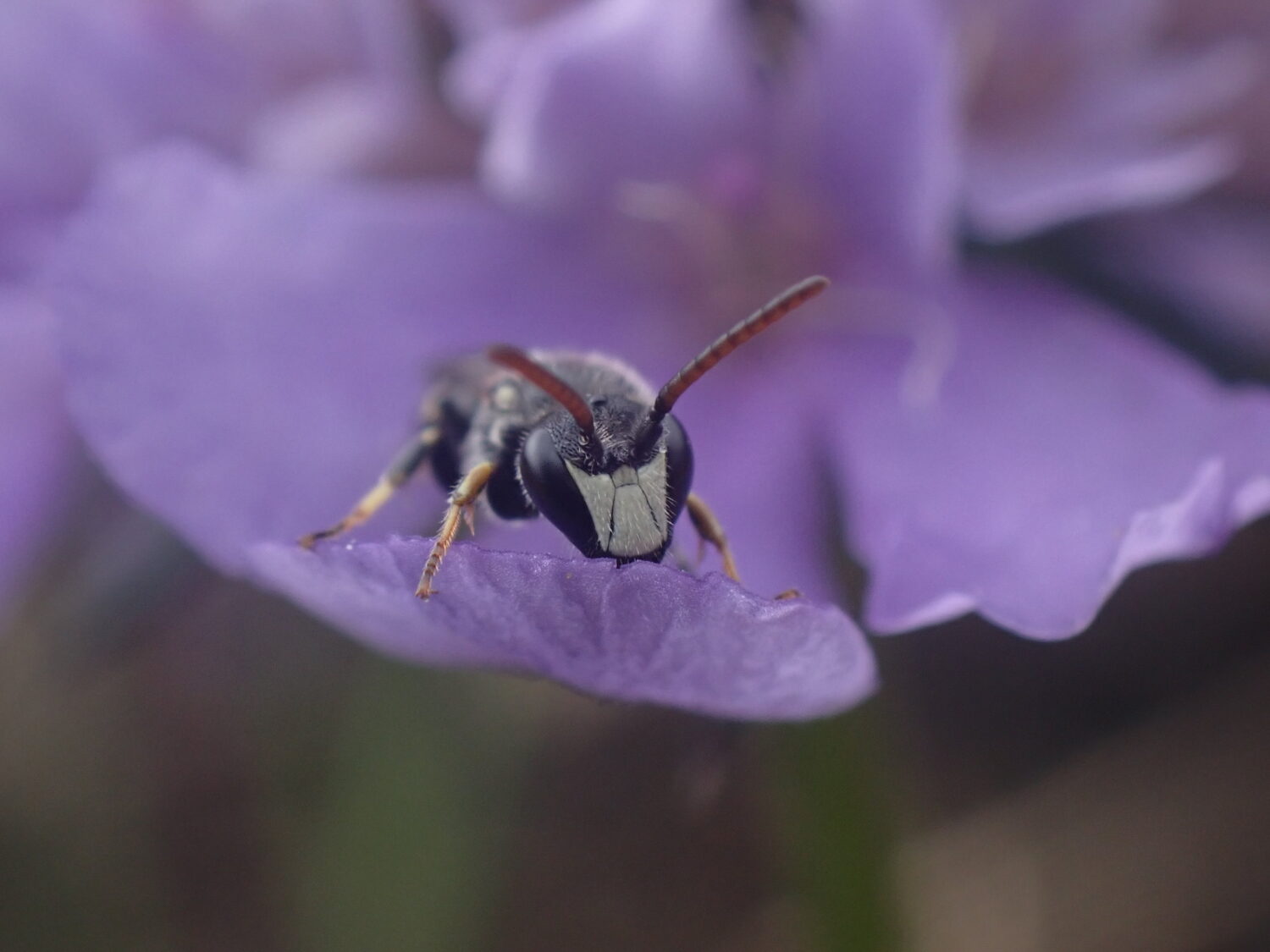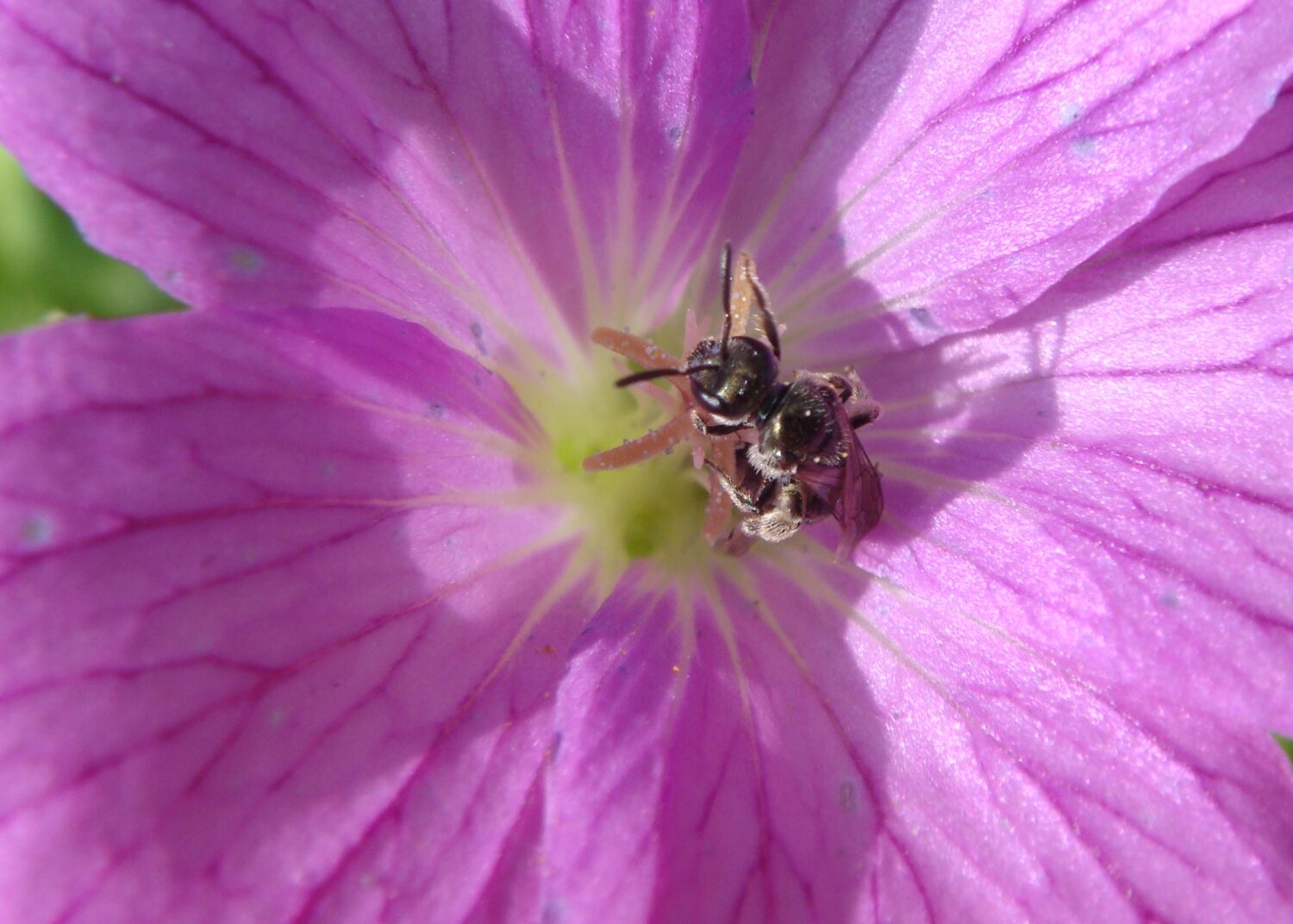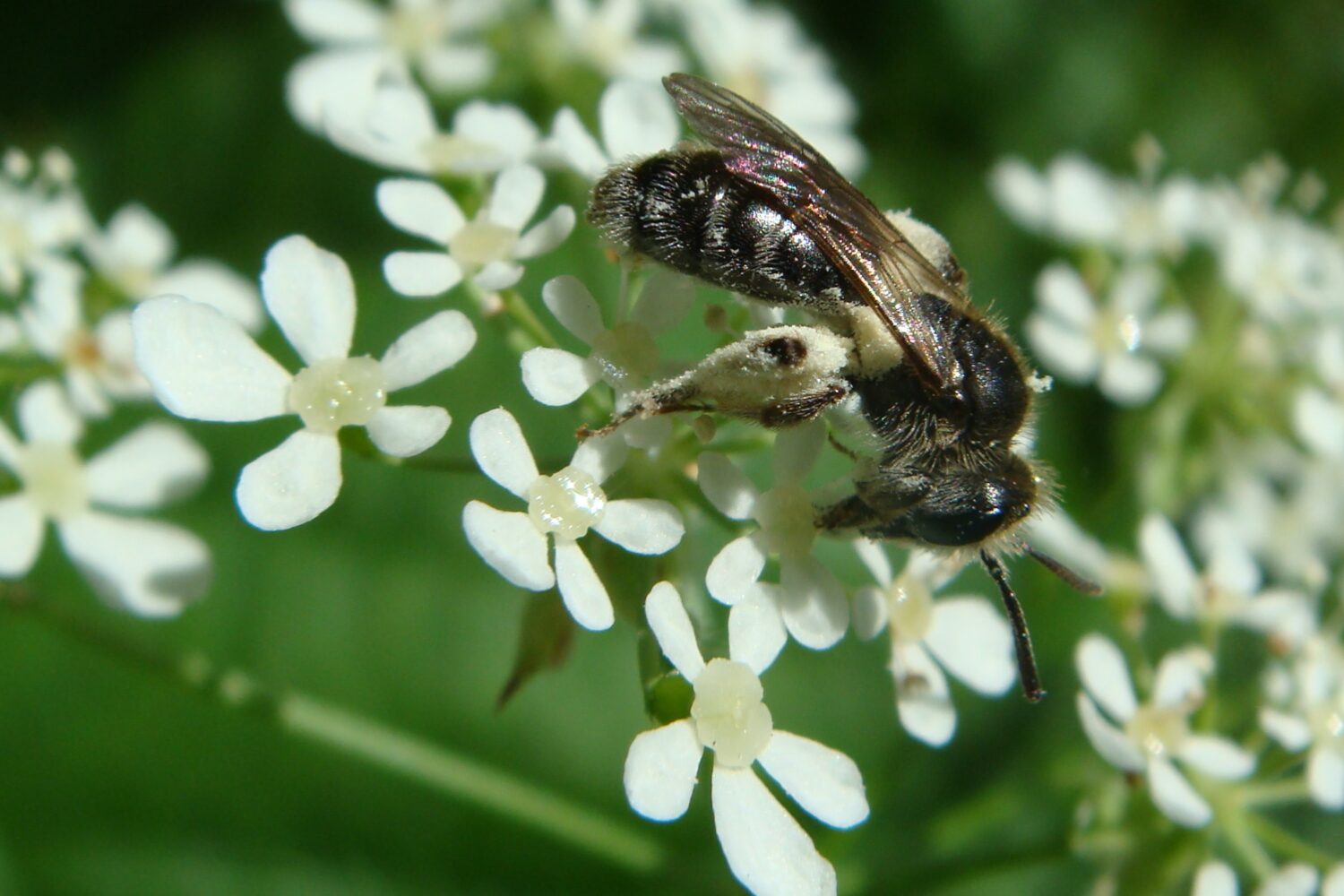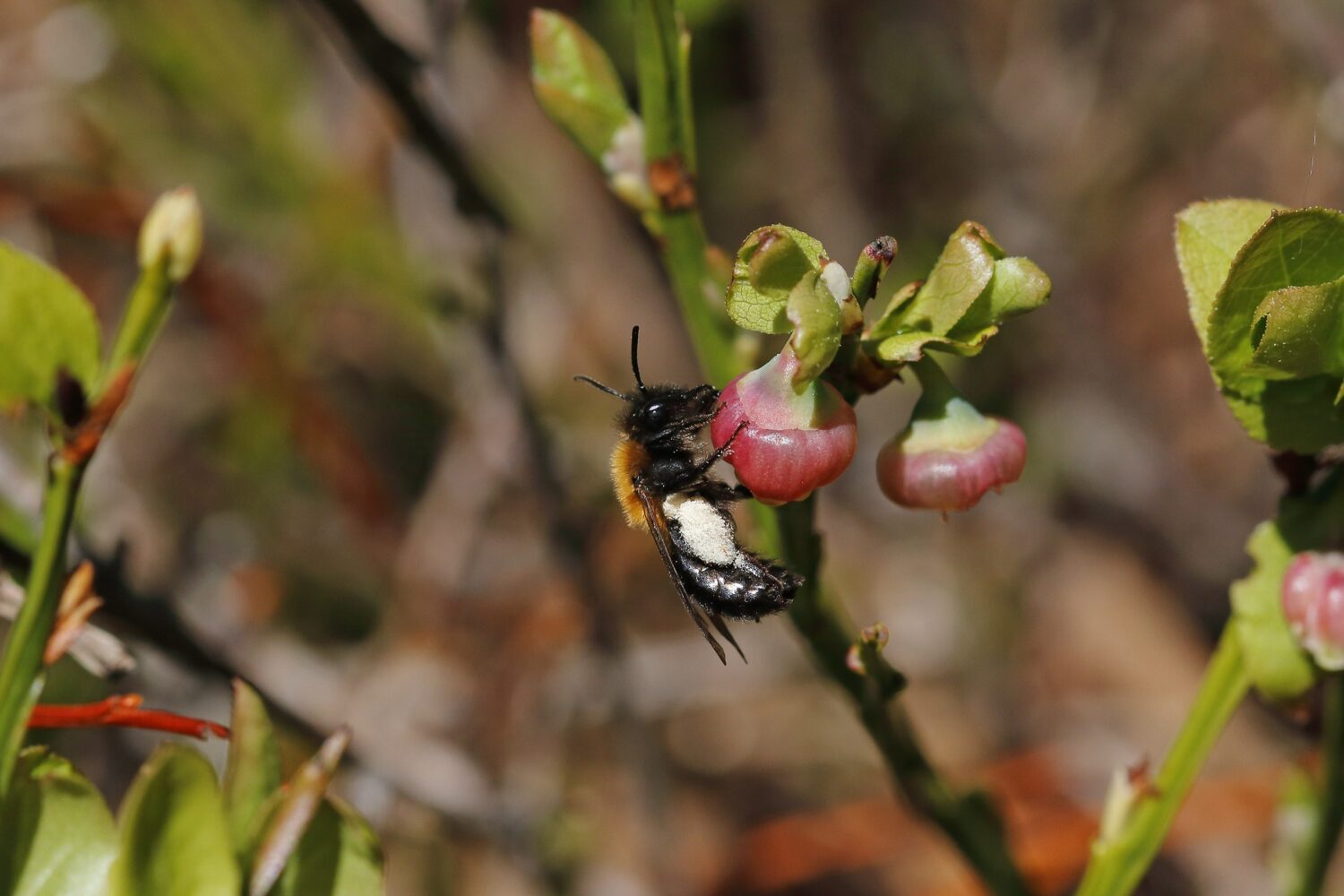Local entomologist, Louise Hislop, introduces some of the smaller, overlooked bees of the North East.
The bees highlighted in the North East Bee Hunt are some of the most easily identifiable in the field or from good photographs, mainly those of medium to large size. There are many smaller bees that are more challenging. Due to their size, they are often overlooked and under-recorded, and are often mistaken for flies.
Here is a closer look at three groups (or genera) that contain the smallest of our bees in the NE, the individuals being between four – eight mm from head to tail. These bees would require a specimen, microscope, and good key to get to exact species, but with the use of digital photography, we can identify them to genera.

Yellow-face Bees Hylaeus species
Predominantly black solitary bees, not appearing hairy, usually with yellow or white facial markings, and easily mistaken for flies or solitary wasps. Females have a coloured pair of spots on the face, while males have predominantly pale-patterned faces, which makes them easy to sex, and sometimes, to identify from photos.
Of twelve species found in the UK, possibly 4 or 5 may nest in the NE, though there are very few records. The commonest of these appears to be Hylaeus communis (other possibles may be H. brevicornis, H. confusus, H. signatus, and in the west H. hyalinatus). They are on the wing between May and September.
Hylaeus bees nest in hollow plant stems and existing cavities in walls and wood. Nest cells are lined and sealed with a waterproof cellophane-like substance secreted in the bee’s mouth. Females carry pollen to the nest in the crop, along with nectar, so they have no pollen-collecting hairs. As they have short tongues they mostly forage on flowers with short corollas.

Base-Banded Furrow Bees Lasioglossum species
Lasioglossum and Halictus species are ground nesting bees that vary from the size of honeybees down to the smallest bees. The female’s tail is always densely hairy with a bare-looking median furrow called the rima. In Lasioglossum, bands of white hair on the abdomen are located only at the base of each tergite (segment), while those in Halictus are on the apex. Females carry pollen on scopal hairs on their hind legs and visit a wide variety of flowers.
There are 34 species of Lasioglossum in the UK, of which 4 of the smallest are grouped together as the Lasioglossum morio group. The integument (skin) of the head and thorax are bright metallic bronze-green to blue-green (unlike other Lasioglossum which are non-metallic). There are records of 3 out of the 4 in the NE (L. leucopus, L. cupromicans, L. smeathmanellum),
Most Lasioglossum nest underground in light soils, often in large aggregations, but this group also use decaying mortar. Females emerge in the spring and establish nests, often a vertical burrow with cells off it, the excavated soil forming a tumuli or spoil heap like mini-volcanoes round the entrance hole. They fly from April to September.

Mini-miners Andrena species
Andrena are the largest genus of bees in the UK, with 70 species. The females have well-developed facial foveae, a band of short, dense, velvety hairs running parallel to the inside of the eyes, which is characteristic of this genus, though not always easy to see. Along with most ground nesting solitary bees, females carry pollen on scopal hairs on their hind legs, though in Andrena this is extensive and includes hairs on the propodeum. Most species have a black integument, but a few have red markings on the abdomen.
A sub-set of 10 Andrena species are referred to as mini-miners, of which only 2 are likely to be found in the NE, Andrena semilaevis and A. subopaca. The former shows a preference for umbellifers and speedwells, while the latter is the species most likely to be found in upland areas.
Burrows can be vertical to horizontal with side shoots ending in one or more cells. A spoil heap of soil often accumulates as a tumulus around the entrance. They are on the wing between April and August.

Take part in the North East Bee Hunt
Urban or rural, beginner or expert, we need your help to record eight distinctive bees in gardens across the North East this spring and summer.
Your records can add to our understanding of bees in the region and inform conservation and monitoring efforts.
Taking part is easy and every record counts, wherever you live in the region.